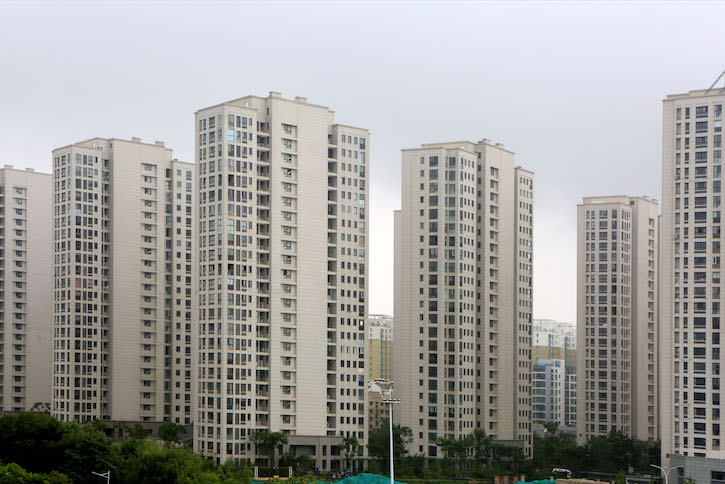
By Andrew Collier
The IMF’s new “Global Financial Stability Report,” with a comprehensive overview of China’s credit outlook, suggests that 5.5 percent of all loans, or $641 billion, are nonperforming. Using companies’ ability to at least pay interest on loans, the IMF writes, the amount of corporate loans at risk more than doubles to $1.3 trillion. But the report, which focuses on official credit through the banking system, fails to take into account implicit debt that is likely to become part of official credit in the future. What’s more, several recent policy initiatives—debt-equity swaps and debt-bond swaps—are likely to exacerbate the problem.
The report gives China credit for several recent policy moves, from liberalized deposit rates to a new exchange rate system and the elimination of rules for outbound investment. It also highlights growing concerns about China’s rising corporate debt: the percentage of firms that cannot even cover interest payments on debt has ballooned over the last five years to 14 percent from 4 percent, and more than 40 percent of all firms have “excess payables,” or more than 45 days’ sales outstanding. Nonetheless, according to the report, this level of nonperforming loans is “manageable given existing bank and policy buffers and the continued strong underlying growth in the economy.”
That assessment may be overly optimistic, because it doesn’t capture future borrowing trends. Even some Chinese economists think the IMF estimates are too low. The value of all loans owed by the nation’s non-financial companies equaled more than 160 percent of GDP as of May 2015, according to Yu Yongding, research fellow at the Chinese Academy of Social Sciences.
What is interesting is what the IMF does not include in its analysis of Chinese debt. Much of China’s real debt is implicit—technically not bank debt, but loans that probably will become bank debt fairly soon. In addition, several policies are likely to boost debt even more. What would we throw into this pile?
Local debt. The official 2014 National Audit Office survey puts the total local debt at RMB 24 trillion, and local bankers suggest it could be as high as RMB 30 trillion. About half was loaned by China’s banks, while the rest came from private sources through shadow banking channels. Much of this bank debt would already be included in the totals for corporate loans. However, some private debt, because it was given to state-supported local companies, is likely to end up on bank balance sheets, too.
Implicit debt from shadow banks. Lending from the shadow banks, which includes the government-owned trusts, wealth management products sold by the banks, and other sources like online peer to peer lending, is basically private loans to corporate borrowers. According to Moody’s, the total is more than 44 trillion, and upon examination, that figure seems low. Technically, this isn’t bank debt. But it will become that soon.
Debt for bonds swaps. In addition, the new program that allows banks to swap local debt for bonds as a way to reduce interest rates has backfired, becoming a way for local governments to borrow even more. Instead of eliminating debt, the program has simply added bonds to existing debt. The swaps started out at RMB 3 trillion but could double or trip this year, adding substantially to bank nonperforming loans once local investments start to default—which is already starting to happen.
Debt for equity swaps. To save financially distressed state-owned enterprises (SOEs), Beijing has offered to permit certain firms to exchange their outstanding loans to the banks for equity stakes. In a meeting in March, top officials agreed that the first batch would total RMB 1 trillion. While some argue that this will give banks a voice on SOE reform, more likely it will just allow indebted state firms to increase their debt to replace the swapped debt. As a result, that RMB 1 trillion is likely to balloon within a short period of time – and it, too, will be added to bank balance sheets.
Why? First, many of the loans were sold through banks, and so lenders assume the banks are behind them. Second, many of the borrowers, such as local government companies, have state backing, and it’s going to be tough for state leaders to separate private from government borrowers. Third, lenders who are politically connected, such as wealthy people in the cities and workers with big state firms, can threaten to demonstrate and force the government to recapitalize the loans.
There are a number of steps Beijing can take to help improve China’s debt position. First, the government can increase the central government bond market. Local bonds are just another form of bank debt without much transparency. However, central government bonds are larger in size and are the explicit liabilities of the central bank. Beijing has an aversion to increasing the country’s official debt-to-GDP ratio, now around 42 percent. But acknowledging debt as a central government responsibility would increase transparency. Second, Beijing should abandon the debt-for-equity swap program. Such swaps just leave investors in the dark about the true debt picture for firms and are unlikely to result in any greater control over corporates by the banks. Increased transparency about China’s real debt burden could go a long way to calming skittish investors.
Andrew Collier is Managing Director of Orient Capital Research, based in Hong Kong. Before founding Orient Capital, Collier was president of Bank of China International USA, the U.S. investment banking arm of the Bank of China.


